Written by Louise Bagger
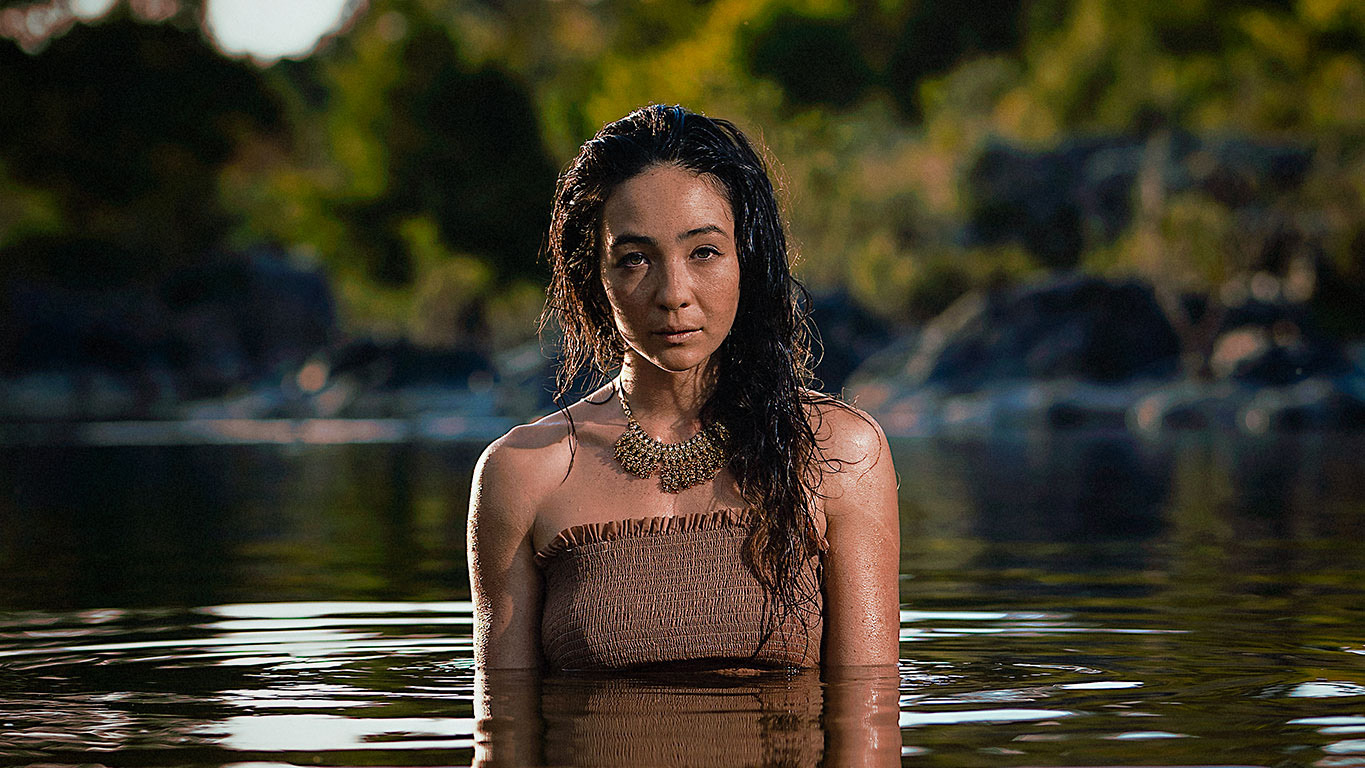
The art of portrait photography is about capturing the essence and personality of a person or group of people. Or, it could be about capturing photos that relate to a commercial brief (ie fashion) or a model portfolio. A portrait can also be about the substance of the location which may be relevant or specific to the subject (known as an environmental portrait). It can go beyond simply taking a picture of someone’s face; character, emotions, and individuality also come into play.
Is there a perfect location or time of day to take a portrait photograph? How long is a piece of string? The possibilities are literally endless. I am always excited about finding a new location to shoot. The mere visual connection for the first time sets my mind running with possibilities. The series of shots of Kim (@kimmiejadelai) in this article were taken at ……. hm, I might leave you guessing for just a bit.
I was taking my new LUMIX S5II for a test run on this day. Paired with the absolutely delightful LUMIX S 85mm F1.8 L-Mount lens, I definitely wasn’t disappointed. And did I mention the weather?
A few key aspects and techniques contribute to creating a great portrait.
1. Composition: Composition is as important in portraits as in any other photography category. It involves arranging the elements, including of course the subject, within the frame to create a visually pleasing and balanced image. Factors to consider include the subject’s position within the frame, background (is anything distracting), lighting (what is the source and where is it coming from? More about this in the next point), and overall framing to create an appealing composition. Have you heard of the rule-of-thirds? (Hot tip: If you’re not familiar with the rule-of-thirds, or not confident to assess a scene organically, turn on the Photo Grid Lines in the settings menu – et Voila!)
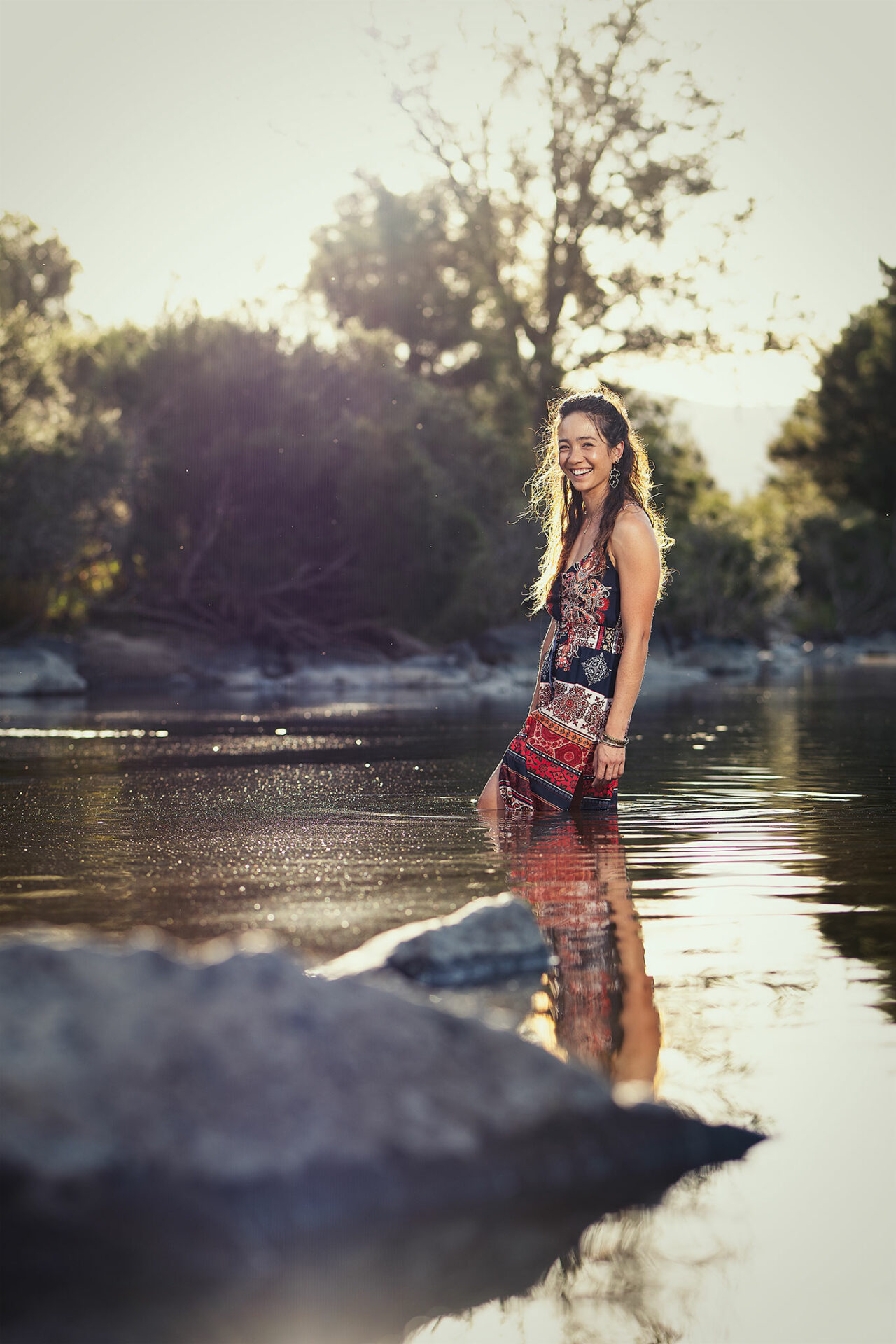
2. Natural Light: Light plays a vital role, if not the most vital role, in setting the mood for a portrait and highlighting the subject. Natural light, such as soft sunlight during golden hour (which I had on this shoot) or diffused light on an overcast day, can create a flattering and gentle effect. Alternatively, artificial light, like studio lights or off-camera flash, helps to achieve a desired look and the ability to control shadows and highlights. When we started this shoot, I had enough available sunlight for what I wanted to shoot. (Hot tip: try and keep the sun behind your subject). As you can see in the shot where Kim is wearing the blue dress, keeping the sun behind Kim meant her face was shaded and I had even light across the front. Having the sun behind her, also provided a beautiful rim light in her hair.
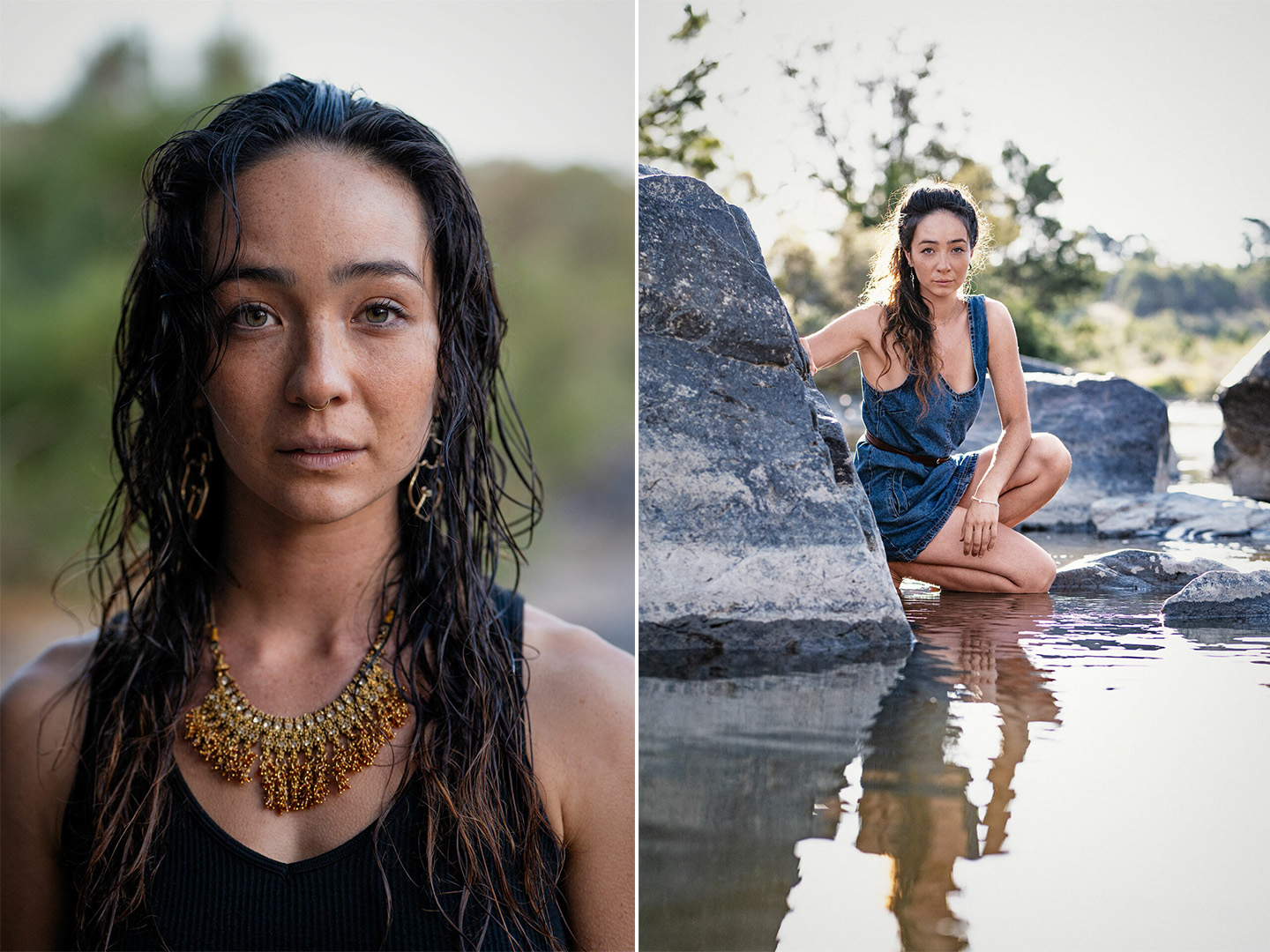
3. Studio / Artificial light: As the afternoon drew on, I opted to include a single off-camera flash, a small speedlight, to provide a fill light (filling the shadows or darker areas). When doing this, I manipulate the camera settings to first set the exposure for the ambient (available) light; I generally always under-expose for the natural light. Then, the introduction of the off-camera flash provides me with the ability to not only add fill-light but also to shape the light. And yes, my stand was in the water with me! The flash also gave a magical element to freezing the action in the hair-flick.
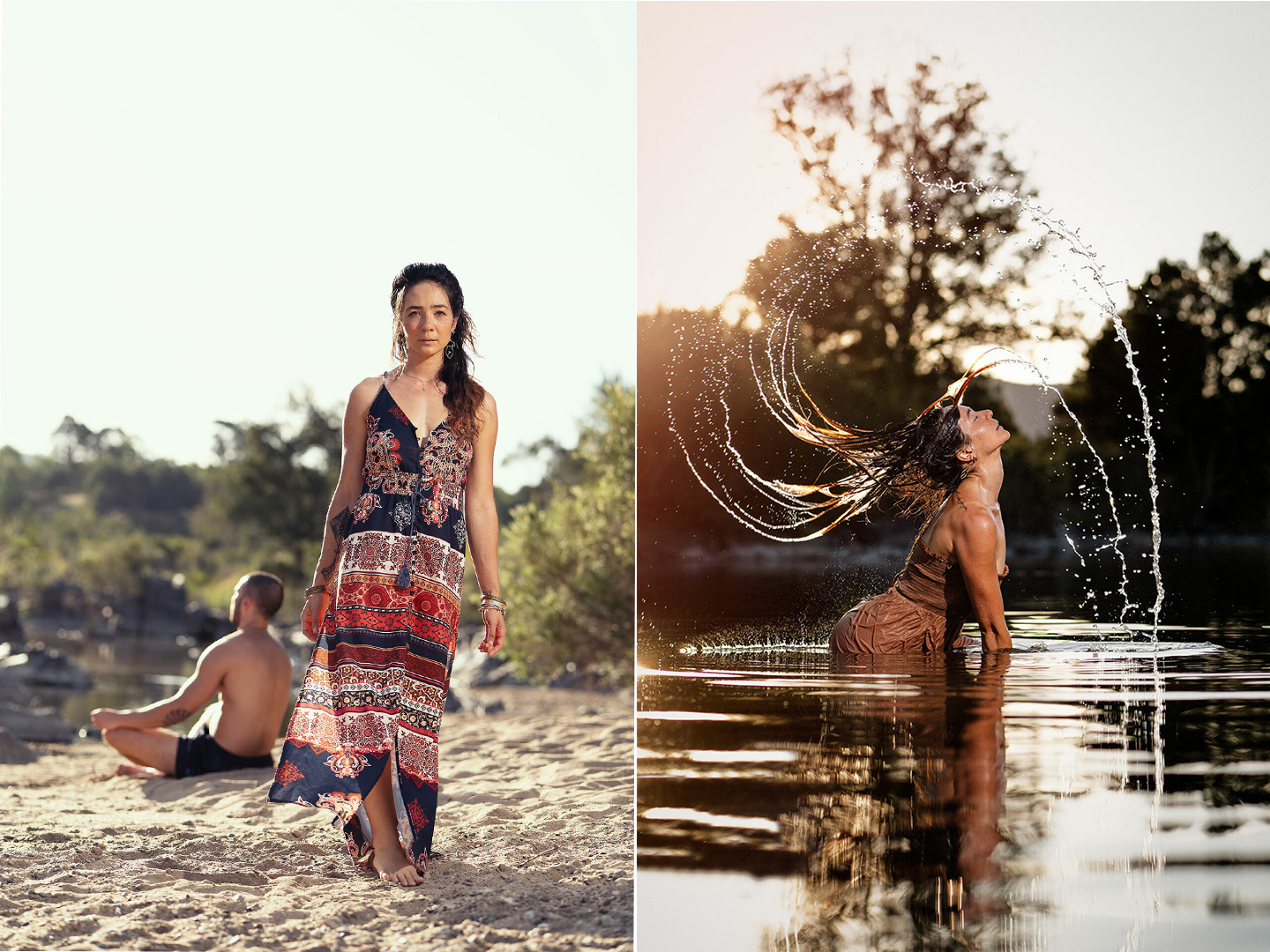
4. Location: I had scoped the location the week before the shoot. This was the last week of summer and still daylight-saving time. We started our shoot just after 5 pm and finished at around 6.30. Fortunately, and thankfully, we were blessed with a 38-degree day, as we were both in the water for the whole shoot. I knew getting that golden late afternoon light would be key to the look I was after – especially paired with the off-camera flash.
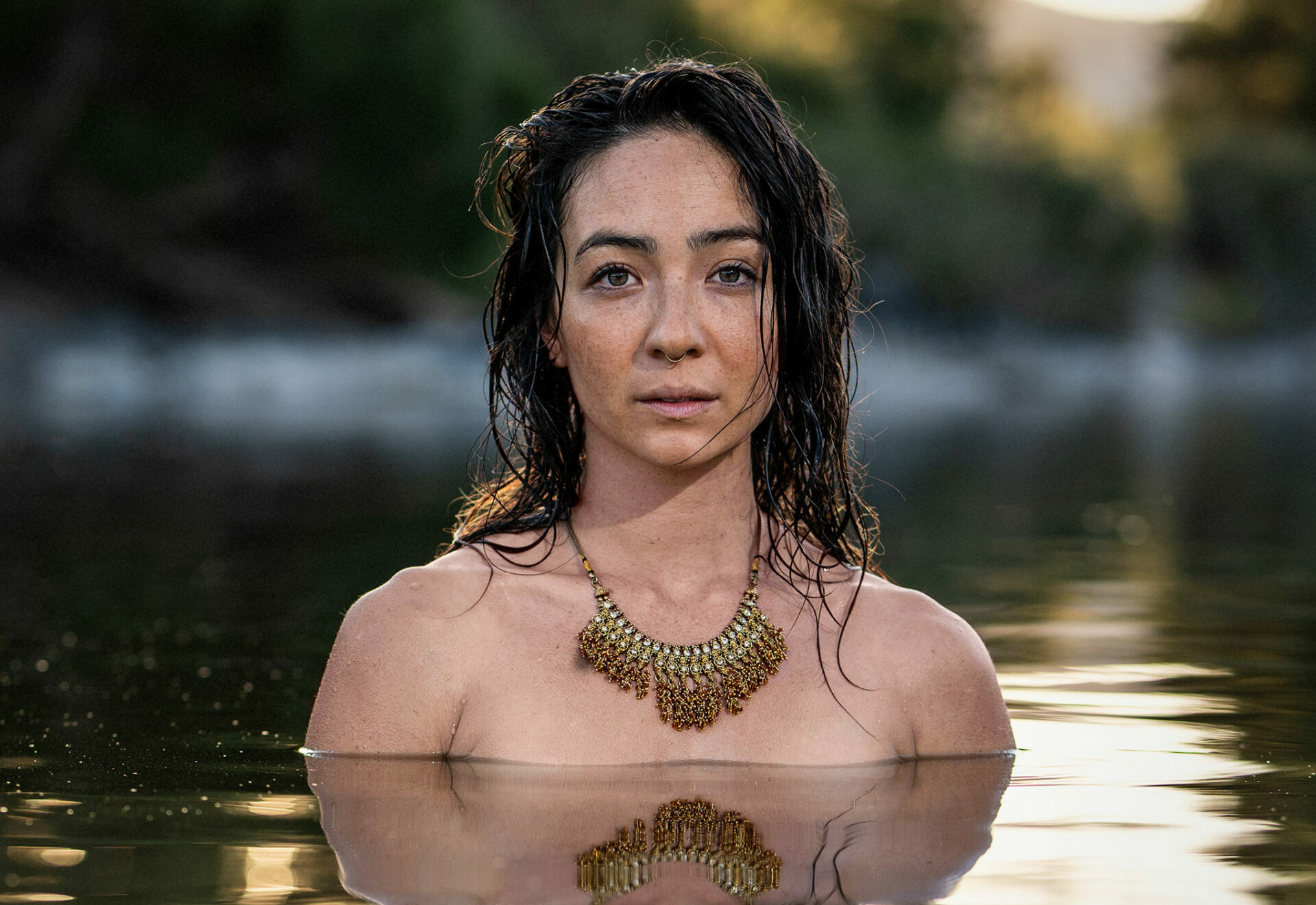
5. Posing and Expression: Directing the subject’s pose and expression is an essential part of portrait photography. A professional model, such as Kim, needs minimum direction to achieve great expression. My primary direction in this instance was refining her position and certain aspects of her movement. Regardless of who is in front of my camera, communication, and rapport-building skills are crucial for eliciting natural and genuine expressions. (Hot tip: One key point that I make to everyone that I teach is to come out from behind the camera to talk to your subject).
6. Depth of Field: Here is why I love the LUMIX S 85mm with its F1.8 aperture. I can concentrate the focus on the subject, while creating a blurred background (known as ‘bokeh’). This is a common technique used in portrait photography. It helps to draw attention to the subject’s face or specific features within the shot, creating a sense of depth and separation from the surroundings. Achieving this effect is often done by using a wide aperture (small f-number) to create a shallow depth of field. The majority of the shots were with an aperture of F2.8. The clean and oh-so-sharp focus of the S5II gives me confidence that I will nail a shot, even at such a large aperture. (Hot Tip: When shooting one person, I can safely shoot at F2.8, or even wider if needed. When photographing a group of people, I opt to stay safe at F4 or 5.6 to ensure a greater field of view is in focus).
7. Background and Environment: The choice of background and environment can significantly impact the overall feel of a portrait. The background should complement the subject and enhance the story while being careful to avoid anything that might detract from the main point of focus. A carefully selected background can add context and depth, or even create a visual contrast that enhances the subject’s presence. (Hot tip: Train your eyes to look around the frame before you take the shot to check there are no branches or other objects ‘sticking out’ of the subject’s head).
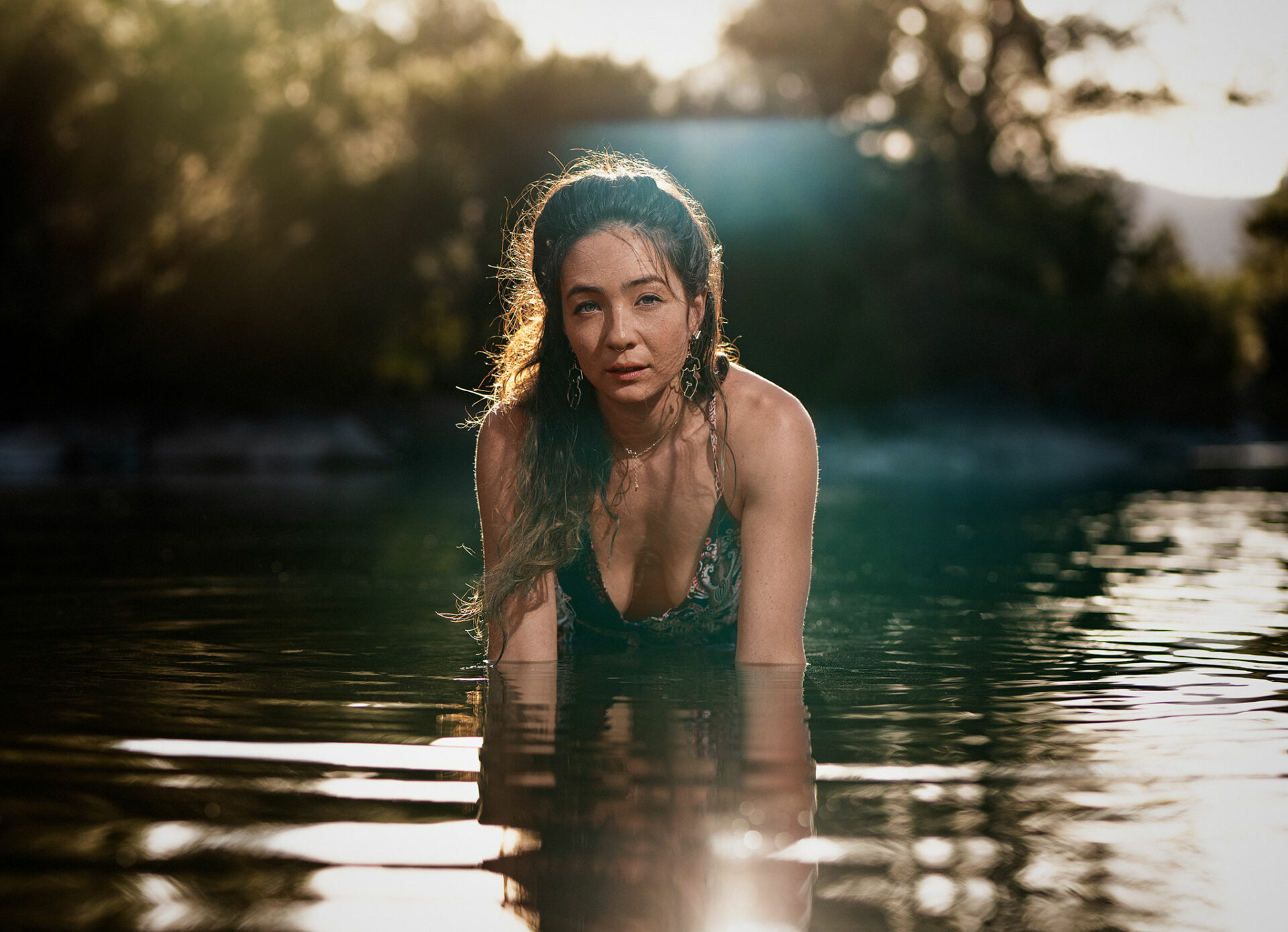
8. Connection and Storytelling: The most compelling portrait photographs often evoke an emotional connection and tell a story. For outdoor work, I can quickly navigate the environment through the viewfinder to maximise the best look and feel needed for a shot. As the sun started to set on this day, the orange rays provided a beautiful rim light in Kim’s hair. Finding a dark background enhanced the look even further.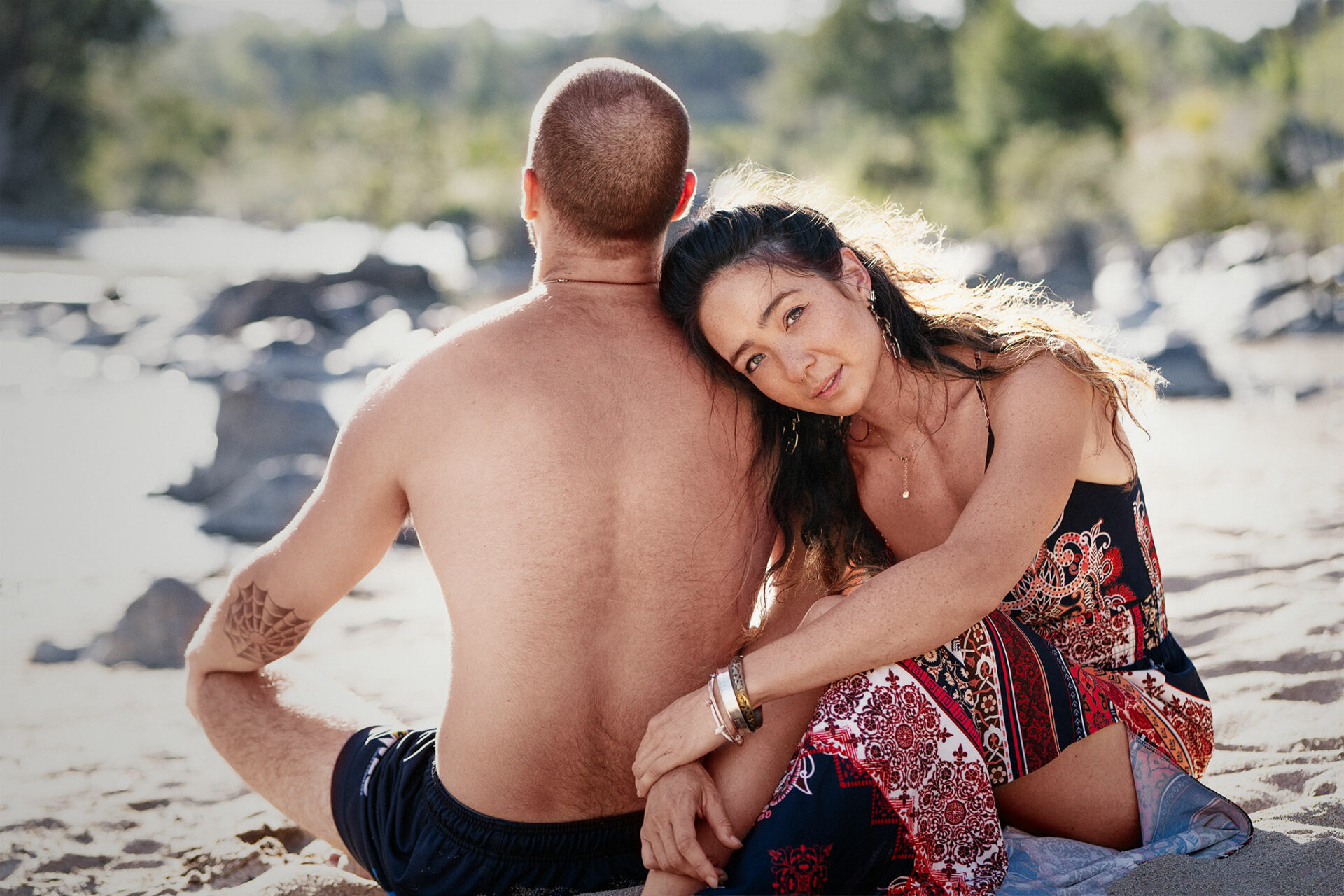
9. Finally, post-production: Post-production, or editing and retouching, can further enhance the impact of a portrait photograph. This involves aspects such as colour correction, or converting to black and white, image tuning such as contrast, highlights, and shadows, also removing blemishes or other distractions. The goal is to achieve a final result that aligns with my vision while maintaining a natural and authentic representation of the subject. This is a whole other topic and a complete skill set that I have learned over time, and it has taken time to find what works best for me.
So, I hear you asking, who’s the guy? Not only does a new location spark my interest, but if I see something, or someone, who may add to the story, let’s just say, I’m not shy. This lovely young chap was quietly meditating on the sand. He had a look that I liked and totally worked with Kim’s vibe. I asked Kim if she minded. Kim is awesome to work with and is totally chill. I think you’ll agree, it worked well.
Overall, the art of portrait photography requires a combination of skills and creativity, and the ability to connect with people. It aims to go beyond the surface, capturing the essence of individuals and creating images that evoke emotion, sparks curiosity, and leave a lasting impression.
Ok, where am I? I have been a professional photographer for almost 15 years. I work in a broad range of genres ranging from portraits, events and commercial assignments. My work has been recognised and awarded at State, National, and international levels. I live in Canberra, ACT and this amazing spot is Pine Island, frequented by locals as a popular swimming and picnic spot. I will definitely be back.
